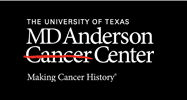
Chapter 28: The Clinical Research Committee
Files
Loading...
Description
In this chapter, Dr. Benjamin talks about a major contribution he made to the institution by setting up a Clinical Research Committee to administer detailed protocol review. He explains why this was necessary at the time, as there lay people on the institutional review boards were not able to fully review clinical trials. Dr. Benjamin notes that current CRC is the one he established. He sketches some changes in the roles and connections between the IRB and CRC.
Identifier
BenjaminR_03_20150306_C28
Publication Date
3-6-2015
Publisher
The Making Cancer History® Voices Oral History Collection, The University of Texas MD Anderson Cancer Center
City
Houston, Texas
Topics Covered
The University of Texas MD Anderson Cancer Center - Building the Institution; Contributions; Institutional Processes; MD Anderson Culture; Research, Care, and Education
Transcript
Tacey Ann Rosolowski, PhD:
Well, let me ask you, as you kind of look at the scope of the administrative dimension of your career, there are things that you’ve contributed to that we haven’t hit on. I mean, I know, for example, I have on my list that you’ve helped develop some of the practice algorithms and also been involved in the annual conference, you know. Are some of those things that I’ve missed asking you about that you would like to talk about a bit here?
Robert Benjamin, MD:
No, I think actually my major administrative contribution, both good and bad, to the institution was in instituting detailed protocol review. When we first had the Division of Cancer Medicine, I set up a Clinical Research Committee within the Division of Cancer Medicine because I was a member of the IRB, and I found that the IRB was spending a lot of time going into details of protocols that really required medical expertise, but the IRB, by the way it’s constituted, has to have a large number of people who are laypeople or who bring other areas of expertise than medicine and clinical research, and there was no way that they could deal with the details of how the clinical research was organized.So what we now have as the CRC in the institution is something that I set up, and when we first set it up, the idea was the CRC would go over the science very carefully and make sure that the protocols really were well written, and then if the science was approved, the IRB only had to deal with issues of the ethics regarding the way the protocol was done, what were the risks to the subjects, and was the informed consent adequate.We now have a very complex CRC mechanism, but they review so many protocols that the protocol review is sort of random, I would say, in its applications. So it really depends on who your reviewers are and what happens, and there isn’t a cadre of people who really have major clinical research expertise who are involved in the review process, but they still have definite clinical review of the protocols.The IRB has gotten more back into second-guessing the scientific questions rather than just the ethics, so it sort of makes it double jeopardy for the investigator and doesn’t do it the way I had originally set it up. So that’s why I said “better or worse.” But I think having careful protocol review is a good idea, and we now have it, and we didn’t before I set it up. So I think that’s my single outstanding administrative contribution to the institution. I don’t know that some of the other things that you mentioned are really all that helpful or important.
Recommended Citation
Benjamin, Robert S. PhD and Rosolowski, Tacey A. PhD, "Chapter 28: The Clinical Research Committee" (2015). Interview Chapters. 559.
https://openworks.mdanderson.org/mchv_interviewchapters/559
Conditions Governing Access
Open



